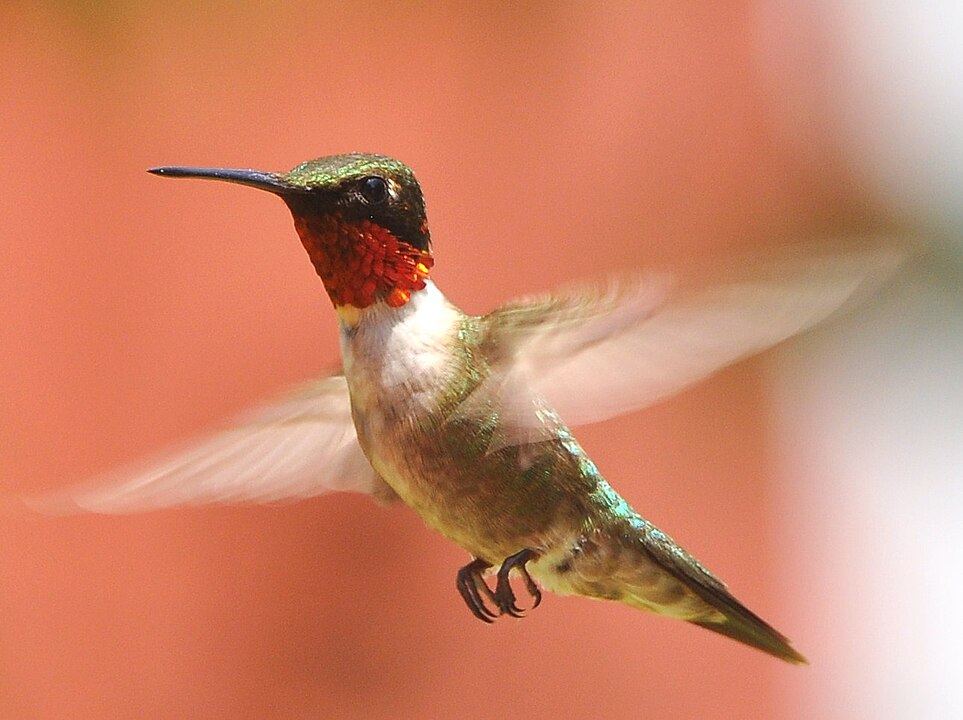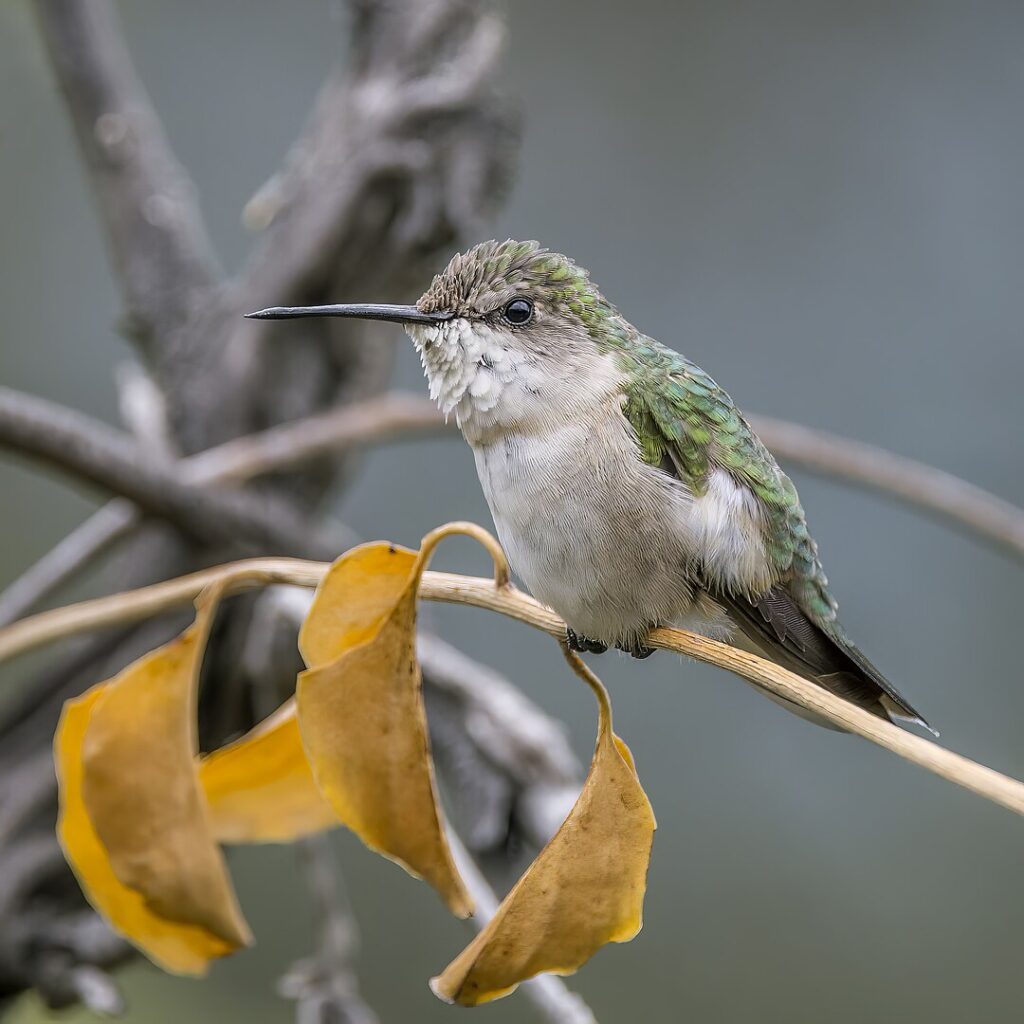
Archilochus colubris
Overview
Archilochus colubris, commonly known as the ruby-throated hummingbird, is one of the most widely recognized hummingbirds in North America. Renowned for its dazzling iridescence and extraordinary flight agility, this species plays a vital role in pollinating various flowering plants across its range.
Morphology and Identification
This tiny bird measures about 7–9 cm in length and weighs only 2–6 grams. Males have a brilliant ruby-red throat patch, known as a gorget, which can appear dark or black in poor light. Both sexes have metallic green upperparts and a slender, slightly down-curved bill adapted for nectar feeding. Females lack the red throat and are generally paler below.

By Charles J. Sharp
Feeding Behavior and Pollination
Archilochus colubris primarily feeds on floral nectar, using its long, specialized tongue to lap up liquid from deep tubular flowers. It also consumes small insects and spiders for protein. While feeding, it inadvertently transfers pollen from flower to flower, serving as an efficient pollinator for plants such as trumpet creeper (Campsis radicans) and red columbine (Aquilegia canadensis).
Range and Migration
This hummingbird breeds in eastern North America and undertakes a remarkable migration to Central America for the winter. Some individuals cross the Gulf of Mexico in a nonstop flight of up to 800 km. Its seasonal movements are closely tied to flower availability and climate conditions.
Habitat
Archilochus colubris inhabits a variety of environments, including deciduous forests, meadows, suburban gardens, and open woodlands. It is especially attracted to areas with abundant nectar-producing flowers and sugar-water feeders.
Conservation Status
Currently listed as Least Concern by the IUCN, the ruby-throated hummingbird has a stable population. However, habitat loss, pesticide use, and climate change pose potential long-term threats. Encouraging native flowering plants and maintaining pollinator-friendly landscapes can support this species across its migratory range.
